Three things Scotland have that England need
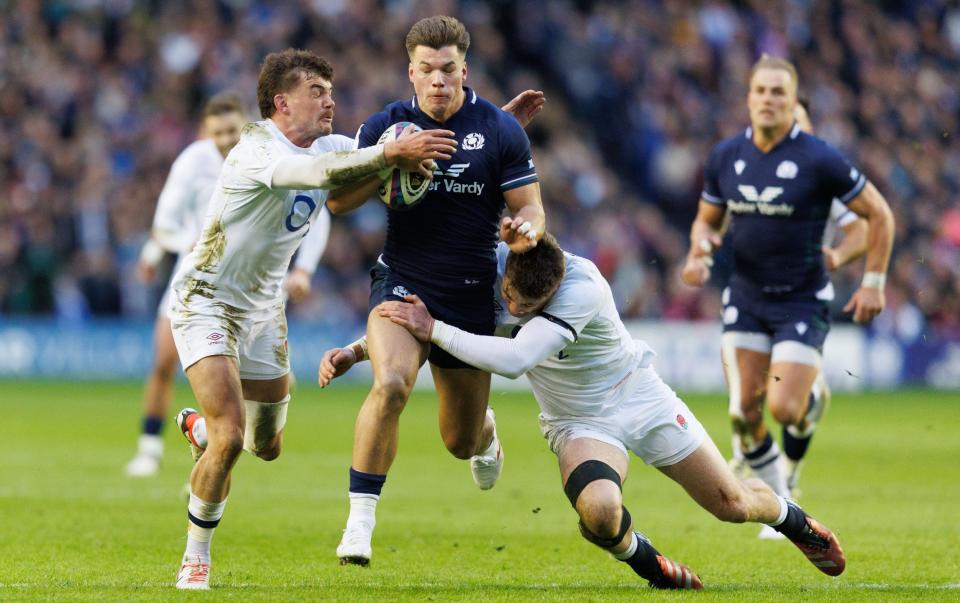
The least satisfying spectacles in sport are those that drift along and then peter out before teaching us anything. Murrayfield on Saturday was never likely to fall into that category, such were the intertwining subplots.
A fourth consecutive Scotland victory over England reinforced the superiority of Gregor Townsend’s side across this period of dominance. While aided by a deluge of handling errors at Murrayfield, the hosts also underlined how they have forged ahead of England.
A complementary midfield to beat blitzes
We were reminded that Finn Russell can exert control a match in an understated manner, without too many Hollywood moments. Scotland’s first try, for instance, came from a simple yet slick first-phase move that used the fly-half as bait to tempt England’s blitz and leant upon another playmaker in Sione Tuipulotu.
At a scrum some 45 metres out, Scotland run a pattern that has been used constantly by teams around the world for the past few years. There is a reason that the set-up is so popular. Done well, it is extremely difficult to defend.
Tuipulotu steps up at first-receiver with Huw Jones cutting a narrow angle and Russell fading out the back with Van der Merwe. Note that Kyle Steyn is holding width on the far touchline. England’s backs, meanwhile, press up and in together with George Furbank sweeping around from full-back:
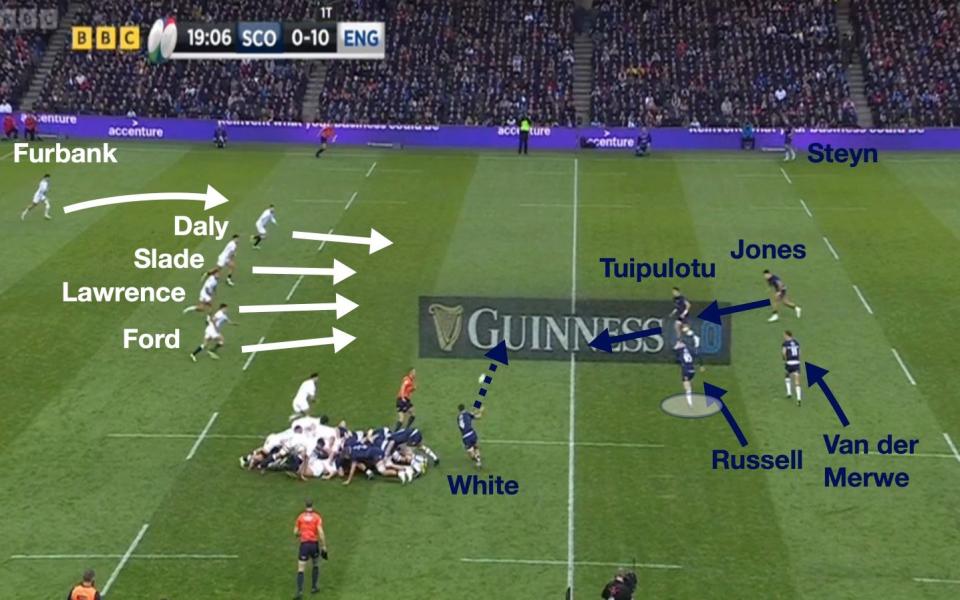
From there, though, Scotland’s balanced and cohesive centre pairing – the men known as ‘Huwipulotu’ – expose the uncertainty of their counterparts. This was an eighth start together for Ollie Lawrence and Henry Slade, yet a first since last season as the former returned from injury. First, watch the try through:
Zooming in on the critical pass, from Tuipulotu to Jones, we can appreciate the subtleties at play. First, Tuipulotu has edged to the outside shoulder of George Ford. This encourages Lawrence to step in. And, because Slade is so concerned about pushing through to stifle Russell, that opens up the hole:
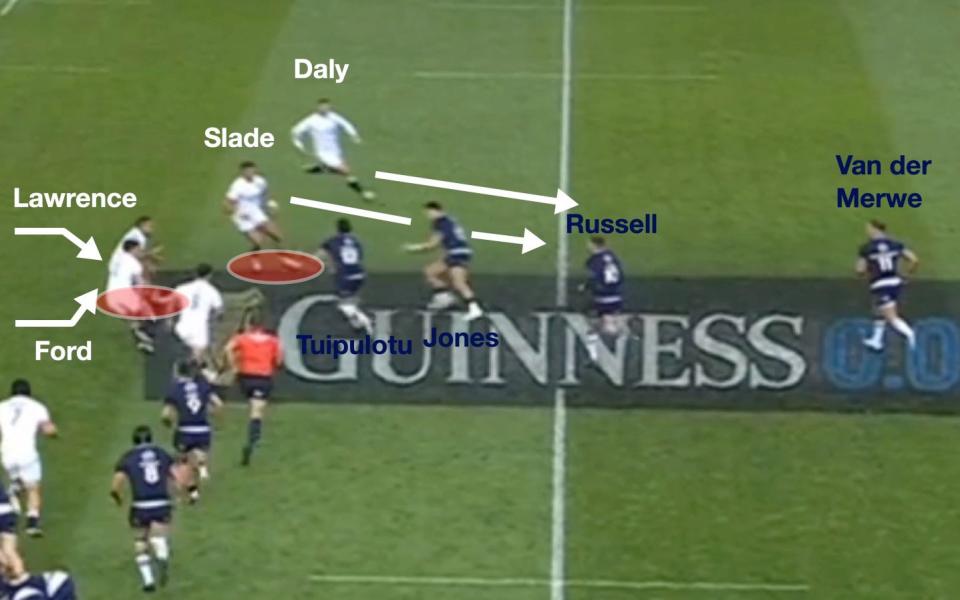
Jones scythes through untouched:

Ironically, the moment is very similar to how Slade himself sliced South Africa back in 2021 with the same play. He stepped across Elton Jantjies to fix Damian Willemse. When Lukhanyo Am pushed past Joe Marchant towards Marcus Smith, Slade picked the right pass:
Scotland trumped England’s aggressive system for try number three as well. A topsy-turvy passage begins with Scott Cummings rising to steal an England line-out. Rory Darge feeds Russell but the visitors respond well. The backs rush up to cut off the wide channels…
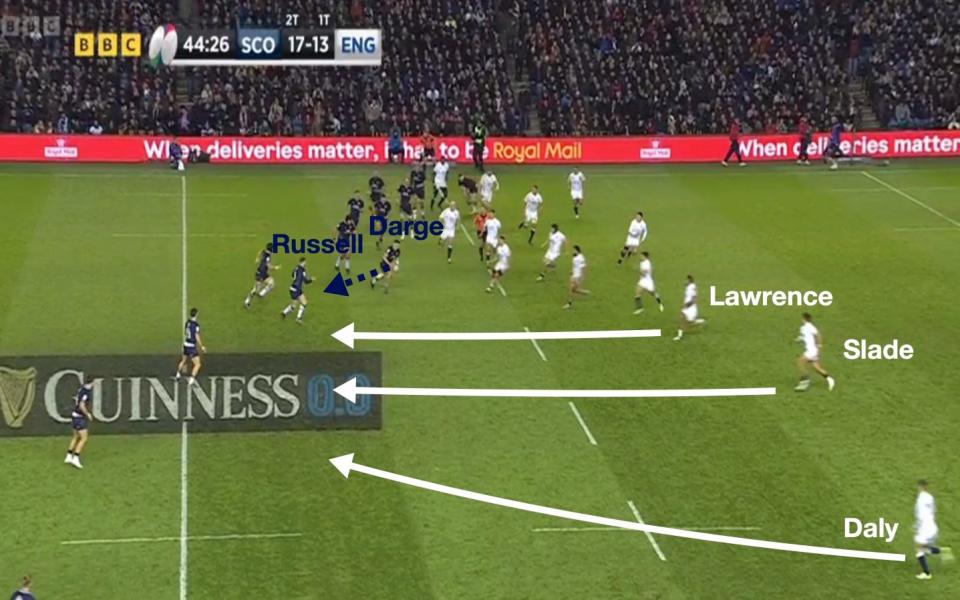
…and a rushed kick is blocked:

But then Cameron Redpath’s footwork foxes several players to get in behind England and the hosts capitalise clinically:
Examining the scoring phase, with Tommy Freeman and Furbank caught up in the tackle area, Russell recognises the space rapidly. Maro Itoje is the closest England defender to the far touchline, which makes them hugely vulnerable, despite Danny Care’s bid to cover. Jamie Ritchie stepping up at scrum-half, with Ben White involved in the ruck, is also crucial. The flanker identifies the need for quick ball and feeds his playmaker:
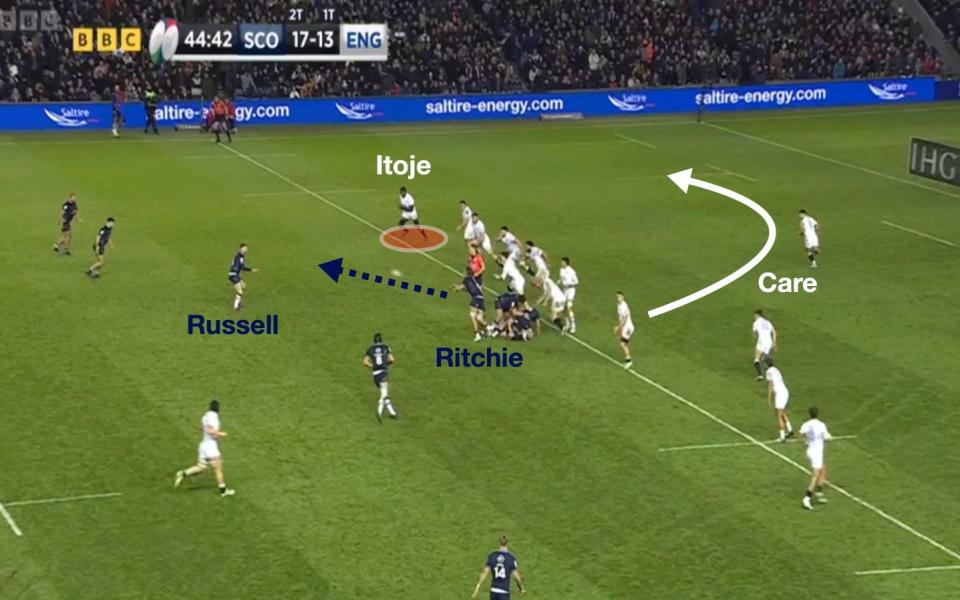
Russell’s execution is pinpoint, and Van der Merwe deserves praise for his positioning as well. He must have made his way to that touchline as Redpath was going through:

Both of these tries reflected a Scotland team on the same page. England, meanwhile, are still striving for cohesion. Lawrence was never really afforded space to run at outside shoulders, as he does so effectively for Bath. The bid for continuity in midfield goes on.
Alertness and athleticism when play breaks up
Urgency in ‘transition’ situations – from turnovers, for instance – says a lot about a team’s mind-set and Scotland offered a glimpse of their collective instincts just before van der Merwe’s second try.
The passage begins at a line-out with England running a similar play that which led to Scotland’s first try, as Slade feeds Ford behind the run of Lawrence. Darge is the man to watch. Initially, he is braced for a tackle in case Lawrence is fed by Slade:
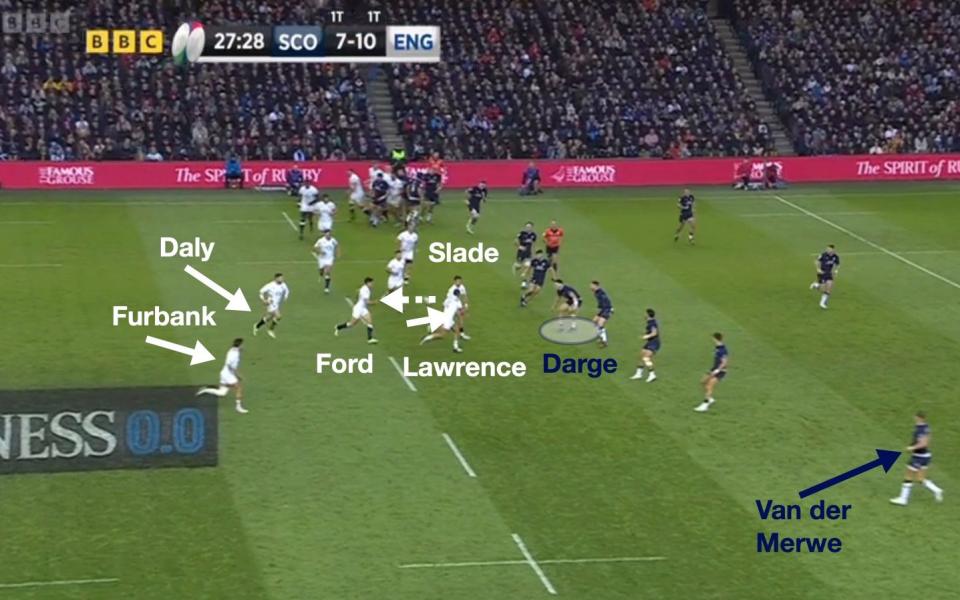
When the ball goes out the back, Furbank spills a pass from Ford. Darge sparks into action, catching the ricochet above his head and surveying the scene before looking to link up with Van der Merwe. To his credit, Daly is alive to the danger. Steyn mops up…

…and Russell drops back to clear:
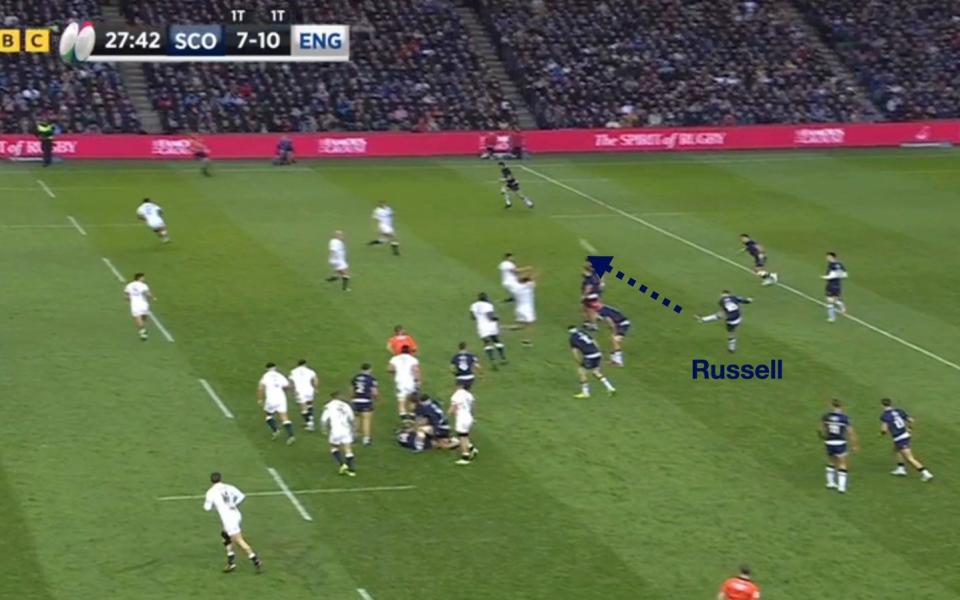
Around a minute later, the passage of play remains unbroken. England once again move the ball from left to right, with Ford in behind Ellis Genge. Slade and Furbank arc into the same space here and eventually seem to get in one another’s way. Note the starting position of Huw Jones:
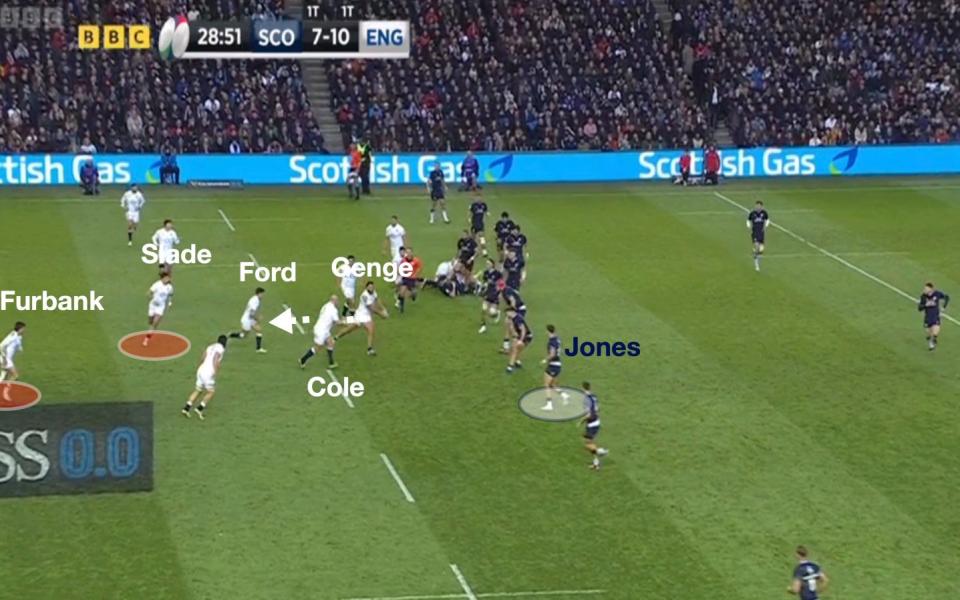
Scotland’s outside centre bursts into action as Furbank, who is perhaps unsighted by Slade, spills Ford’s pass. Jones is tackled by Furbank, but frees his arms to find Van der Merwe:

Teams often bid to get the ball to their quickest players in broken-field situations, which make a lot of sense. Here, feeding the speed is rewarded. Van der Merwe swerves around Ben Earl brilliantly and finishes from 60 metres out:
England did win back high balls to earn possession in unstructured situations, yet have not been markedly dangerous in transition such since Jonny May’s heyday between 2018 and 2020.
This was the third Calcutta Cup match in succession that has seen Scotland rack up more kicking metres than England, yet also register fewer carrying metres. It is just that their carrying metres have counted for tries, in part because they have controlled territory and seized chances.
And as Scotland’s players were on the same wavelength in pivotal attacking moments, their defensive strategy also shone through.
Balance epitomised by defensive intelligence
After the Calcutta Cup had been presented to Scotland, just before he filed down the tunnel, Itoje embraced Steve Tandy, the Scotland defence coach, and shared a quick word with the man who oversaw him on the 2021 British and Irish Lions tour.
Tandy is respected by many who work with him, and Saturday demonstrated why. Scotland were undone by a set play for Furbank’s try, and conceded a second when Immanuel Feyi-Waboso darted clear. Generally, however, their defence phase dictated tempo. Even when England did dent them, they were able to reassert themselves.
This first example comes as Ellis Genge is tackled by Zander Fagerson and George Turner. Watch Tuipulotu:
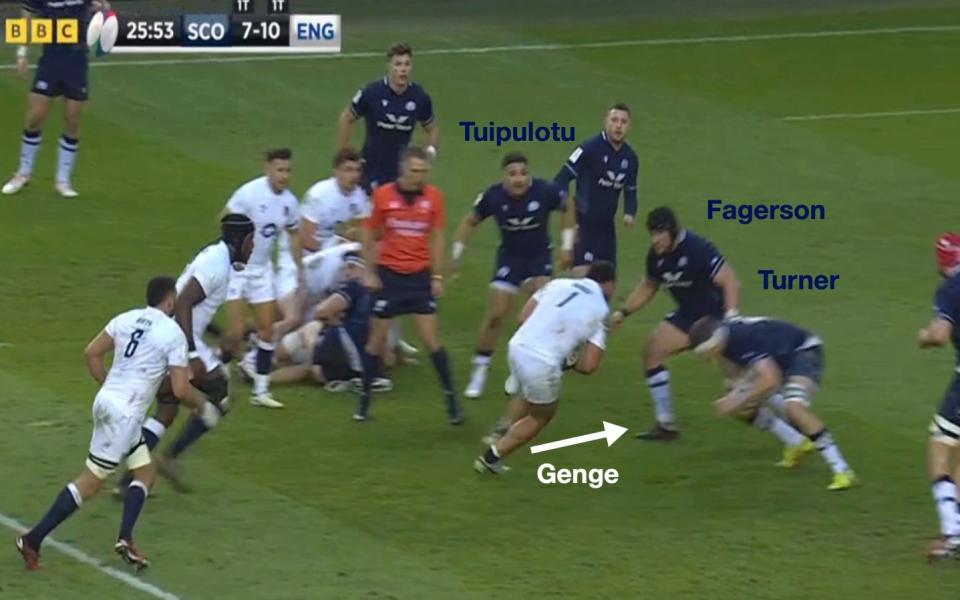
He arcs around the breakdown and shifts Ethan Roots with a counter-ruck just as Danny Care shapes to pass. A static Ford is rag-dolled by Pierre Schoeman:

On the verge of half-time, another piece of canny breakdown defence foiled Care. Grant Gilchrist is the man to track:
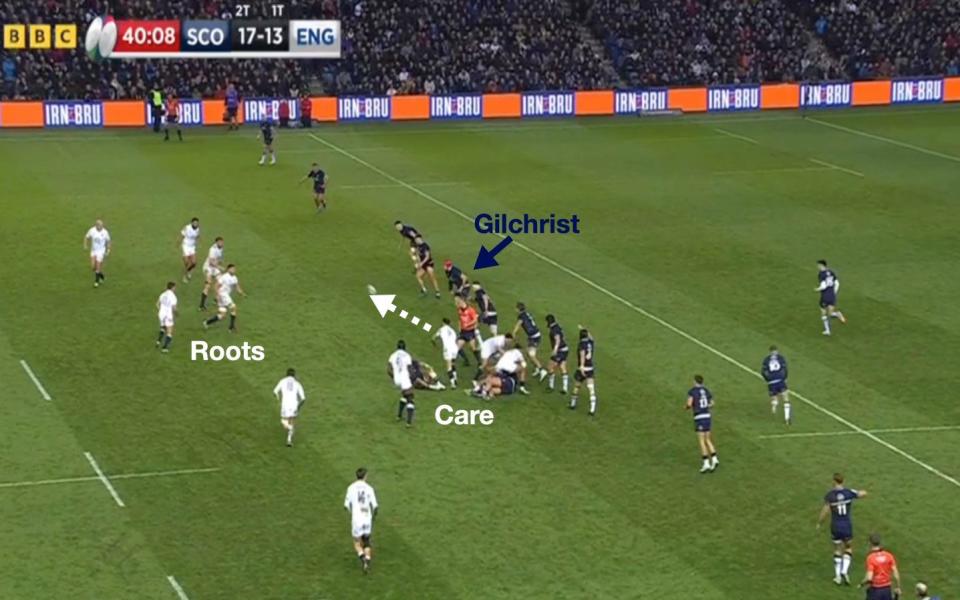
The bruising lock helps to down Roots before bouncing to his feet and driving back Ollie Chessum. Care is caught up in the tangle and is adjudged to have knocked on:

Care’s kicking was also targeted. Scott Cummings attempted a charge-down in the opening seconds of the second half:
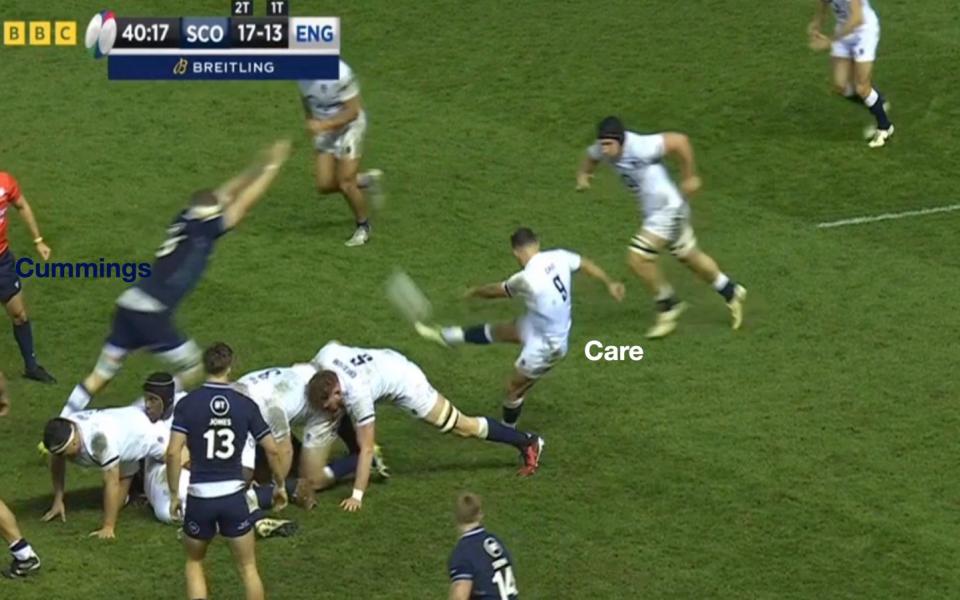
Moments later, after a chip from Russell had forced England to navigate an awkward line-out, Dan Cole is asked to carry. Schoeman presses up…
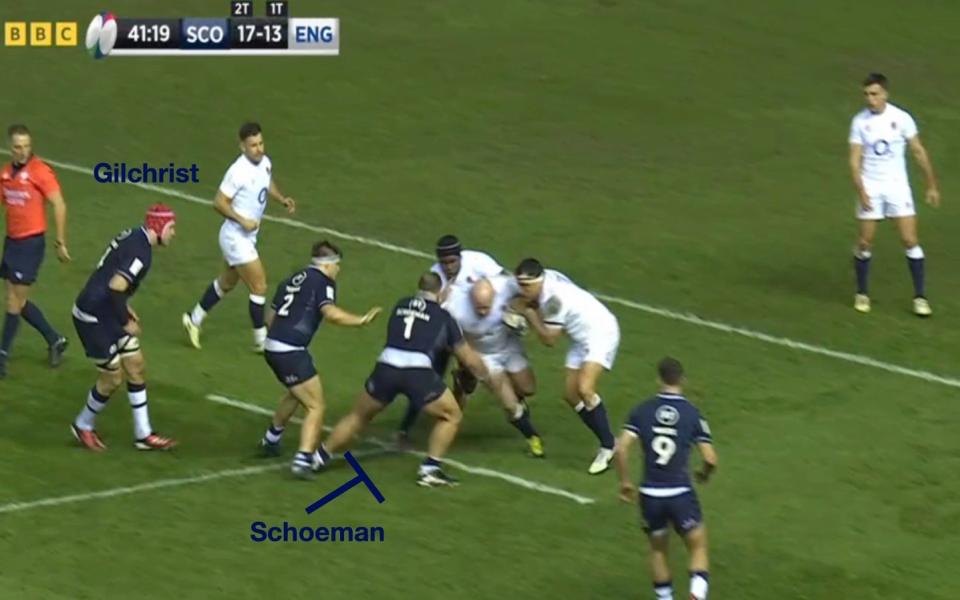
…and drives his opposite man as far as possible towards the touchline. All the while, Gilchrist lingers…

…and almost blocks the clearance, which surrenders a short-range line-out:

Scotland’s pack, and the back five particularly, was balanced with a clear division of labour. Gilchrist and Cummings dovetailed nicely, as did the three battling starters in the back row.
Jack Dempsey’s late maul turnover on Itoje made England look ponderous:

Three different replacements – Andy Christie, Elliot Millar-Mills and Ewan Ashman – all forced turnovers. Settled combinations and familiarity with a game plan also help new faces to establish themselves. It is a virtuous circle.
Gregor Townsend’s charges continue to dominate the Calcutta Cup in part because, comparatively, they are far closer than England are to the sum of their parts.
Match images from BBC


 Yahoo Sport
Yahoo Sport 






































